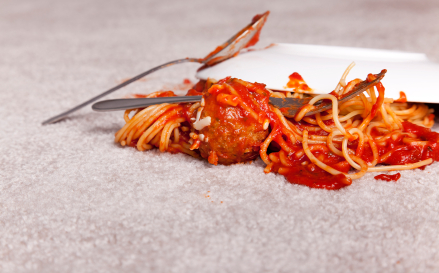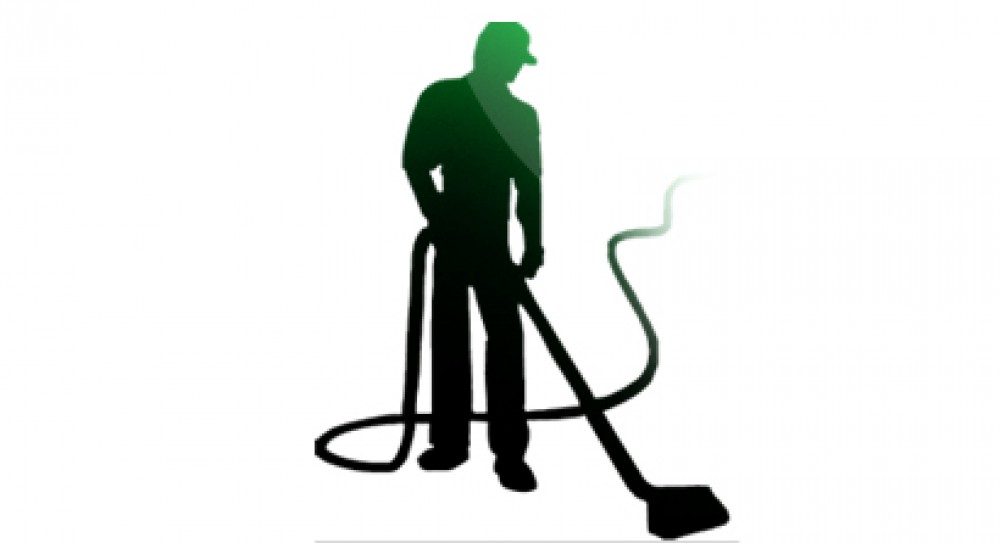Preparation: On cleaning day, it’s helpful to the success of the job to be as prepared as possible. We will move the large pieces of furniture (that can be safely moved), clean the areas requested, and replace the furniture pieces back to their original location (or a new one if you request). We will then protect the carpet by placing tabs of clear plastic under the furniture feet or Styrofoam blocks under console-based pieces to lift them off the carpet so drying air can circulate under them. Things like entertainment centers and china hutches are not designed to be moved while loaded and will usually need to be emptied before they can be safely moved. Frequently, these pieces are not moved at the home owners request and can be safely cleaned around with no visible difference. Picking up toys and small items is helpful, but don’t put excessive weight on a couch, a bed or anything else that is to be moved.
- Spot Cleaning: This is a tricky subject. Some spills contain dyes, (either natural or man-made) which will often permanently change the appearance of what they end up on and resist virtually all cleaning attempts. Some examples would be coffee, red wines, colored sodas (orange and grape are the worst), Kool-Aid type drinks, cat food vomit (often containing a red dye so we think its meaty), pet urine (natural dyes) etc. You get the idea. The other half of the equation is what type of fiber these spills end up on. Wool fibers are wonderfully soft and inviting, but wool is a dye-able natural fiber that will readily accept almost any dye. Wool is also easily color-damaged by aggressive spot cleaners (like Resolve and Carpet Science etc., sorry). Nylon (which accounts for half or more of all carpets out there) is similar to wool in that it will accept dyes, but being a synthetic, will hold up slightly better to spot cleaning. Most Berbers are made of olefin, which is colorfast, but are often mixed with 8-12% nylon to achieve colors they can’t get by themselves. So, knowing what you’re dealing with is half the battle.
Methods: These are also tricky and depend on several factors.If its a liquid, Step (1) Absorb as much as possible as quickly as possible (assuming it just happened). If you have a shop-vac/wet-dry vac (which is the preferred method), extract as much as possible. (2) Rinse with tepid water and extract again. A couple of rounds of this will often negate the need for any detergent use and detergent residue is the most common reason for spot “reappearance”. (2a) If no shop-vac is available, grab a cloth towel (not paper towels) big enough to do the job. Use water to dilute the spill (sparingly) and blot with the towel. I usually suggest standing on the folded towel on the spot in question and turn the towel often. If a detergent is deemed necessary, use it sparingly. A little goes a long way. Give it time to work (several minutes dwell time) then blot, rinse and repeat. Try to resist scrubbing aggressively or in a circular motion. Instead, try to go in the general direction of the pile. It will show less when its dry.
 (3) If its a semi-solid or a solid, scrape up as much as you can with a spatula or a piece of cardboard, etc. working towards the center. As in step 2a, use water to rinse the spot, but be careful not to go overboard on the water or the detergents/spotting agents as they will only dilute the problem and help drive it deeper into the pile. Sometimes letting something dry and then brushing or vacuuming it away works well, like with plain mud.
(3) If its a semi-solid or a solid, scrape up as much as you can with a spatula or a piece of cardboard, etc. working towards the center. As in step 2a, use water to rinse the spot, but be careful not to go overboard on the water or the detergents/spotting agents as they will only dilute the problem and help drive it deeper into the pile. Sometimes letting something dry and then brushing or vacuuming it away works well, like with plain mud.
